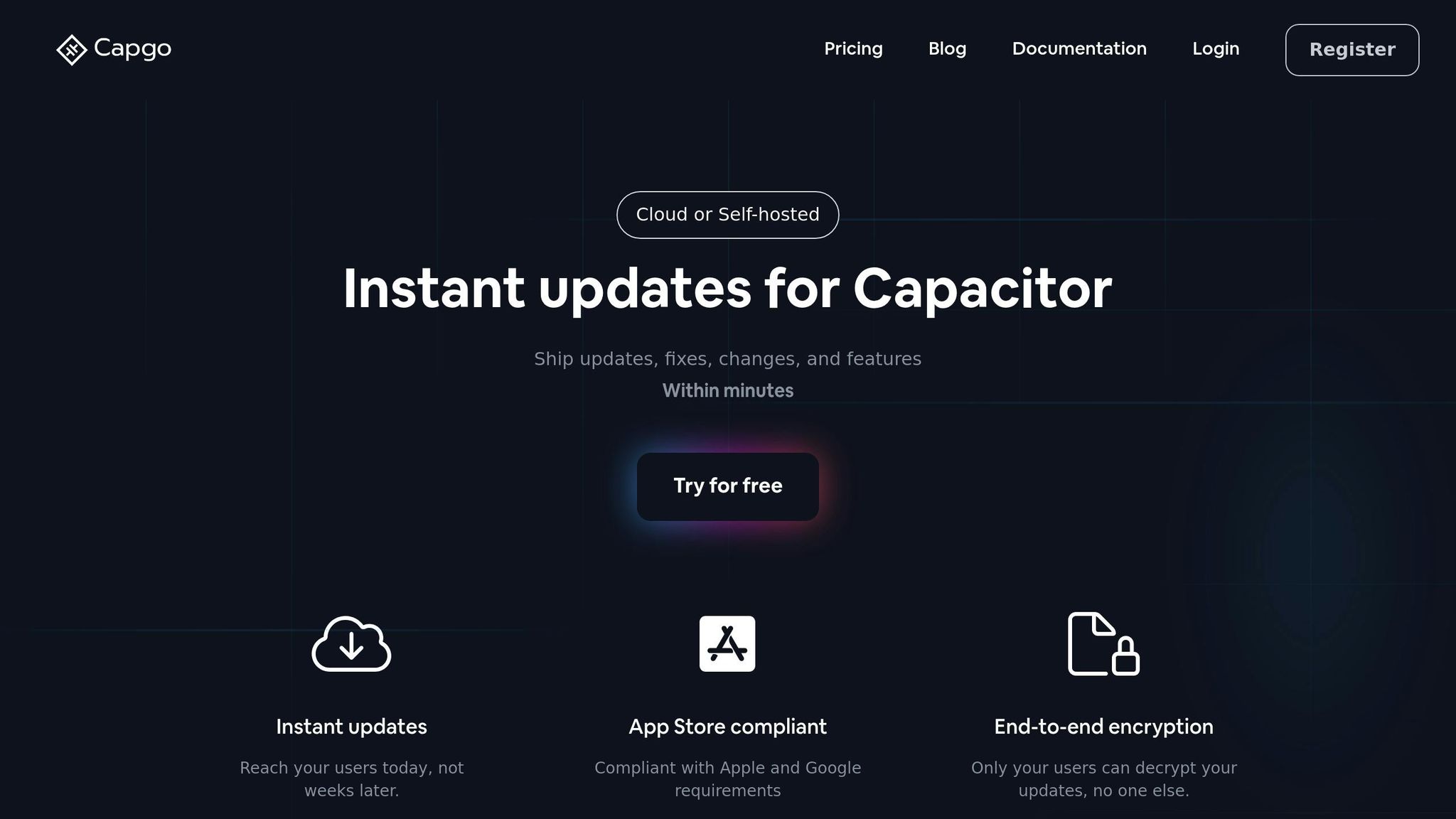RBAC (Role-Based Access Control) is a game-changer for securing OTA (Over-the-Air) updates in Capacitor apps. Here’s why it matters:
- Key Security Risks: OTA updates can be vulnerable to harmful code injection, interception, and misuse if permissions aren’t managed properly.
- How RBAC Helps: By assigning roles (like developer, tester, admin) with specific permissions, RBAC ensures only authorized users can deploy updates, manage testers, or perform rollbacks, reducing risks.
- Capgo’s Features: Capgo stands out with end-to-end encryption, granular permissions, and multi-organization support, making updates more secure and compliant with U.S. security standards.
RBAC isn’t just about security; it’s about maintaining trust and compliance while scaling your app updates efficiently.
What is Role Based Access Control (RBAC)?
Security Gaps in OTA Updates
Pinpointing these gaps highlights how RBAC (Role-Based Access Control) can help address them effectively.
Common Security Weaknesses
Attackers with unauthorized access to deployment systems can inject harmful code into updates, putting users at risk. When update packages lack true end-to-end encryption, they can be intercepted and tampered with. For example, while Capgo provides true end-to-end encryption, many competitors only rely on signing updates [1]. Additionally, overly broad deployment rights increase the chances of accidental or intentional misuse. Without clearly defined roles and permissions, these vulnerabilities remain unresolved.
Consequences of Security Failures
A compromised OTA system can push malicious updates that expose sensitive data, disrupt functionality, and interfere with operations. These issues not only erode user trust but also create legal risks. Frequent failures can harm a company’s reputation and lead to costly remediation efforts.
Aligning with US Security Standards
U.S. security standards mandate the use of end-to-end encryption for all updates and require detailed, role-based deployment permissions. Regular audits of access privileges are essential to ensure accountability and minimize the risk of unauthorized changes.
RBAC Security Features
Now that we’ve discussed OTA security gaps, let’s look at how RBAC features tackle these issues.
RBAC works through three main components: roles, permissions, and access levels. Roles (like developers, QA, or team leads) are tied to specific permissions, while access levels limit the scope of deployments. This setup ensures that only authorized users can push updates to approved environments. These mechanisms directly counter vulnerabilities such as injection, interception, and overly broad permissions.
RBAC for US Companies
In the U.S., organizations often use hierarchical role structures to maintain both security and efficiency. On Capgo, admins can assign and fine-tune user permissions for testers, beta users, and organizations. This approach not only ensures compliance with regulations but also supports secure scaling as teams grow [1].
Setting Up RBAC for OTA Updates
Using the U.S. hierarchy example, Capgo allows you to integrate roles directly into its dashboard and CLI. Here’s how you can implement RBAC principles in Capgo using its built-in tools:
RBAC Setup Guide
Capgo simplifies securing OTA updates with its built-in RBAC features, offering detailed role definitions and a single-command CLI for deployments [1]:
- Define roles like tester, developer, and admin, and assign specific permissions.
- Create organizations to keep projects separated.
- Set channels for beta testing and staged rollouts.
- Deploy updates quickly using the Capgo CLI.
Now, let’s see how Capgo’s RBAC compares to older OTA solutions.
Key features include:
- Granular user permissions for precise access control.
- Channel-based distributions to manage beta and staged rollouts.
| Feature | Benefit | Use Case |
|---|---|---|
| Granular permissions | Fine-tuned access control | Controlled deployments |
| Multi-organization support | Separate environments | Enterprise-level projects |
| Channel-based rollouts | Targeted update delivery | Beta testing |
OTA Platform Comparison
When reviewing OTA platforms for RBAC, here are some standout aspects of Capgo:
- Full end-to-end encryption, while many platforms rely solely on signing.
- Enhanced user assignment options.
- Simplified organization structure for easier management.
RBAC Strengths and Limits
RBAC Advantages
These key benefits of RBAC address the security challenges mentioned earlier:
- Granular permissions: By restricting deployment rights to specific roles and environments, the risk of unauthorized code injection is minimized.
- Multi-organization management: Isolating security domains helps prevent lateral movement across teams and projects, enhancing overall security.
- Dynamic role assignment: Adjusting access levels as teams grow helps remove outdated permissions that could lead to vulnerabilities.
Conclusion
Key Takeaways
RBAC ensures secure over-the-air (OTA) updates in Capacitor apps by using detailed controls to block unauthorized deployments while keeping processes efficient. Features like end-to-end encryption, isolated environments, flexible permissions, and managed deployment channels work together to create a strong security setup.
Capgo’s RBAC Features

Capgo builds on these ideas with an open-source platform offering true end-to-end encryption and role-based permissions. This allows secure and scalable update management across multiple organizations [1].
“The only solution with true end-to-end encryption, others just sign updates” [1]




